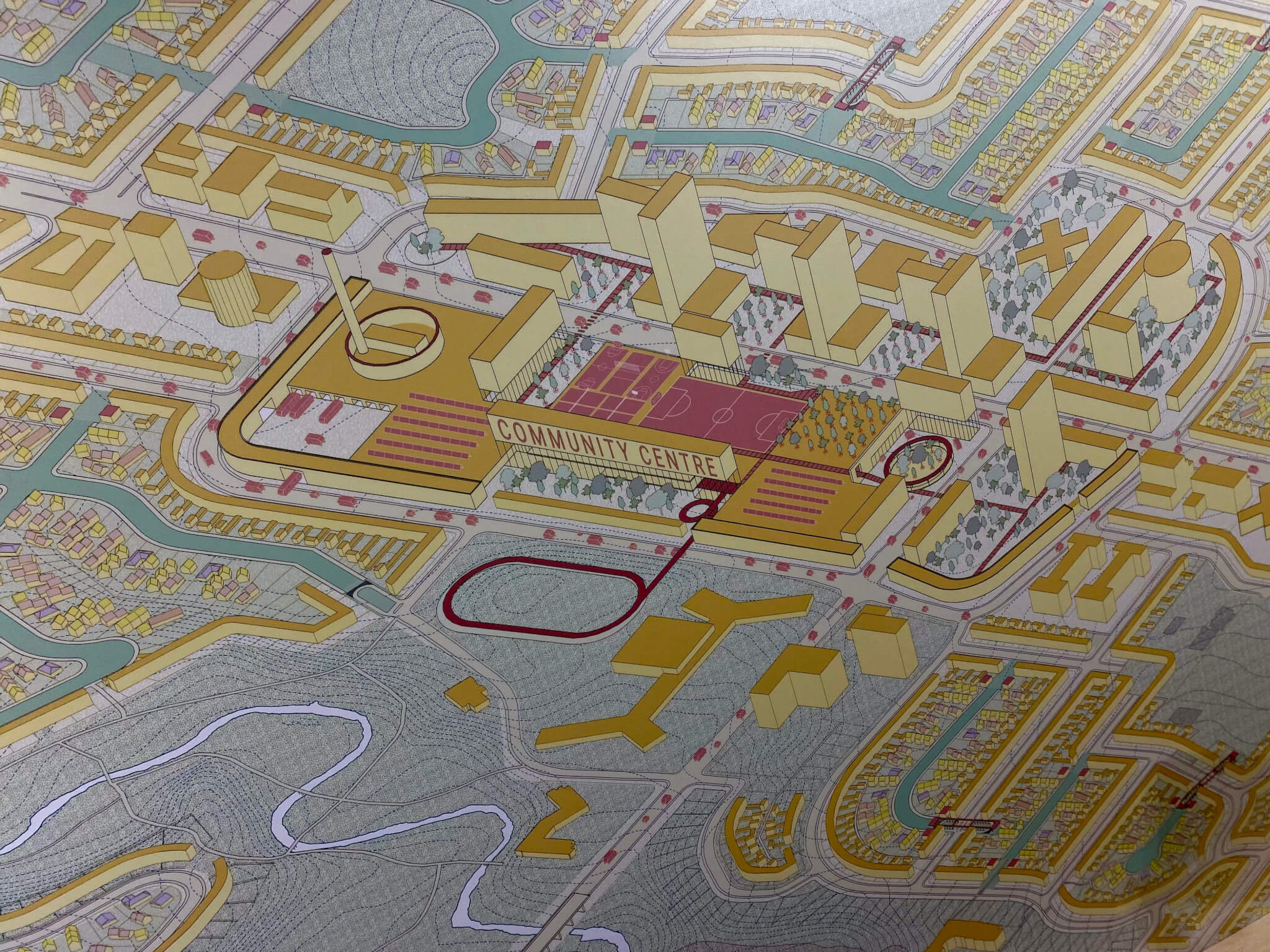Housing Multitudes at the University of Toronto imagines the future of suburbia
Housing Multitudes: Reimagining the Landscapes of Suburbia
Architecture and Design Gallery
John H. Daniels Faculty of Architecture, Landscape, and Design, University of Toronto
1 Spadina Crescent
Toronto, Ontario M5S 2J5
Open through February 17, 2023
Despite Toronto’s building boom, housing prices in the city remain high. As the city and region continue to grow to six million residents and beyond, the Greater Toronto Area’s (GTA) built environment will need to double down on housing density, as a provocative exhibition at the University of Toronto suggests.

Housing Multitudes: Reimagining the Landscapes of Suburbia mainly suggests retrofits for Toronto’s ‘Yellowbelt’, parts of the city that are restricted to single-family zoning. The problems identified in existing suburban forms of planning are familiar to their critics: autocentricity, aesthetic monotony in the building stock, and isolation, to name a few. The exhibition maps the region’s existing building stock, identifying typologies by construction era and overlaying them onto a map of the city. This careful attention allows for material plans for retrofits across decades of Toronto’s building stock.

The retrofits are paired with a larger vision of how city services reach suburbs. The exhibition proposes recentering neighborhoods around existing public schools, locating services like immigration centers, social housing, and mobility hubs around them. Here, horizontally focused growth—including buildings that line entire streetfronts of some blocks—increases density while keeping residents proximate to transit, education, and additional civic infrastructure. Not quite panel housing, and scaled-down from the high-rise that has dominated the 21st-century image of Toronto’s growth, this is an idea for serious development in a fast-growing region.
The exhibition combines architecturally-focused proposals for housing additions with strong limitations on planning reforms in some respects and bold proposals for code and zoning reform in others. The school-centered densification model is mapped along existing road networks—retaining the exhibition’s intended limits on idealism —while reimagining what the framework of winding suburban roads can provide for a community. Ultimately, the compilation of community-minded proposals relies on the citizen-developer as the catalyst for increasing the housing supply, which returns to the primary issue underlying the exhibition.

The exhibition’s proposition for infill housing features prefabricated models assembled by citizen-developers: “residents of Canada who create housing for the sake of housing security… they are not interested in profit as much as affordability. They purchase and live together to lower cost and leverage sweat and financial equity to create value over time.” This is appealing for the speed at which these could be assembled, and the saved time and expenditure in comparison to more standard models of architectural work. The structures themselves are reminiscent of Sears houses, with an updated aesthetic, which the exhibition aptly likens to “IKEA for housing.” These prefabricated homes would be manufactured and shipped for on-site assembly, easy enough to be done without trades workers.

Housing Multitudes suggests these citizen-developers get acquainted with Big Data solutions that could make it easier to clear preconstruction hurdles. Including “batch processing” of code and zoning permissions “coordinated with construction material facilities,” the proposal aims to take advantage of streamlined construction costs and bureaucratic efficiency. Citizen developers would also purchase materials in bulk, further increasing cost efficiency. Yet this begs the question: Could the GTA’s public agencies not purchase materials in bulk pursuing the same strategy?
In this model, power is given to those who already own land, or have the capital to acquire land. The ideal of creating value over time, while posited amid creating affordable housing, retains asset value for those who already have the means to own land rather than for those who can only afford to rent. As such this perpetuates privately led development, whereas policy measures like rent caps can pair with new development to ensure long-term affordable housing past the purveys of the architect.

While a housing strategy outside of traditional ownership models that are so inaccessible to many may seem like a pipe dream, the willingness of Housing Multitudes to reconsider the role of the suburbs to the benefit of the public is desperately needed amid the conversation around housing shortages in both the GTA and North America writ large. Constricting conversations around development to downtowns and trendier neighborhoods is, as the exhibition suggests, insufficient given the impact of suburbanization on the North American city.

